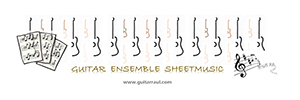The history of Cuba in the twentieth century has directly affected artistic development in that country. Following the Cuban revolution of 1959, Fidel Castro came to power and with him a communist regime whereby almost all events were directly controlled by the government, including artistic expression. This made it increasingly more difficult for artistic creators to have their own voice as the government imposed sanctions on their creativity, similar to the artistic control exercised in Russia at the same time with composers such as Dmitry Shostakovich (1906–1975). Communism did however encourage a deep sense of nationalism in the arts and Cuba was no exception.
Perhaps this was the reason for the large Cuban folk influences in Brouwer’s music. After the revolution, it became increasingly more important for Cubans to establish a culture that was distinctly their own. As Brouwer lived through the revolution and probably received much financial aid during Castro’s regime,this need to create a distinct Cuban voice was strong, as can be discerned from the composer’s writings in his book La Musica: The solution for a colonized country is in suppressing the defining features of the oppressing culture and not the common features withthe universal culture.Brouwer, Leo: La Musica, lo cubano y la innovación,(Havana 1982), 25.
This book will subsequently be referred to as La Musica. Brouwer’s unique and exceptional talent for innovation through the assimilation of the ‘universal culture’ has certainly changed the common perception of Cuban art music and earned him a place among the world’s greatest composers. Through Brouwer’s diligent work as a composer, administrator, teacher and performer, the true cultural identity of Cuba has been firmly established. In his music Brouwer manages to fuse traditional Cuban music with European ‘art music’, a concept that was virtually unheard of prior to his innovations in the field. Many of Brouwer’s works employ classical European forms such as the sonata and fugue, which are integrated with popular rhythms and sounds fromCuba, both African and Spanish in origin, as the composer himself explains…)
Alec O’Leary www.alecoleary.com
Exploring the patterns, figures and flowing ideas of Leo Brouwer





